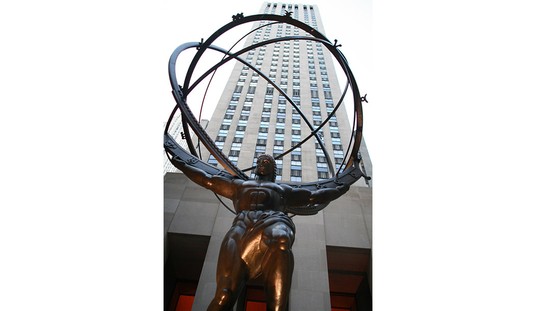There is a saying among old soldiers: There are three ways to do anything, the right way, the wrong way, and the Army way. That actually explains a lot; the Army is big on tradition, or at least, it was during my tenure in Uncle Sam's colors. But a big part of what has, historically, made our Army work is that we're unpredictable. There's an apocryphal saying attributed to a German general in World War 2, who supposedly said, "The Americans are impossible to predict in battle because, while they have books of doctrine, their officers not only don't follow them, most of them don't even read them."
We've always had our own ways of doing things, and most old soldiers will tell you that we've always been willing to try the unconventional. Which brings me to 1836, an Army officer named Lieutenant George H. Crosman, the deserts of the recently acquired American Southwest, and camels.
In the 1830s America’s westward expansion was being severely curtailed by the inhospitable terrain and climate faced by pioneers and settlers. This was particularly the case in the southwest, where arid deserts, mountain peaks and impassable rivers were proving to be an almost insurmountable obstacle to men and animals alike. In 1836, U.S. Army LT George H. Crosman hit upon an unusual idea to deal with the situation. With the able assistance of a friend, E. H. Miller, Crosman made a study of the problem and sent a report on their findings to Washington suggesting that:
“For strength in carrying burdens, for patient endurance of labor, and privation of food, water & rest, and in some respects speed also, the camel and dromedary (as the Arabian camel is called) are unrivaled among animals. The ordinary loads for camels are from seven to nine hundred pounds each, and with these they can travel from thirty to forty miles a day, for many days in succession. They will go without water, and with but little food, for six or eight days, or it is said even longer. Their feet are alike well suited for traversing grassy or sandy plains, or rough, rocky hills and paths, and they require no shoeing… “
Their report was disregarded by the War Department. It was with this rather simple suggestion, however, that Crosman first introduced the concept for what would later become the most unique experiment in U.S. Army history.
It wasn't a bad idea, but it languished for a few years. But in 1847, then-Major Crosman encountered another camel advocate, Major Henry C. Wayne, who worked at the Quartermaster's Department, which was what the Army called supply pukes (Hey, I was a supply puke myself for a time) at that time. They ran the camel idea up the flagpole, and who should notice it but a U.S. Senator from Mississippi - a guy named Jefferson Davis. Yes, that Jefferson Davis.
MAJ Wayne submitted a report to the War Department and Congress recommending the U.S. government’s importation of camels. In so doing, he caught the attention of Senator Jefferson Davis of Mississippi, who thought Wayne’s suggestions both practical and worthy of attention. Davis, as chairman of the Senate Committee on Military Affairs, tried for several years to acquire approval and funding for the project, but to no avail. It was not until 1853, when Davis was appointed Secretary of War, that he was able to present the idea of importing camels to both President Franklin Pierce and a still skeptical Congress.
In his annual report in 1854, Davis informed Congress that, in the “…. Department of the Pacific the means of transportation have, in some instances, been improved, and it is hoped further developments and improvements will still diminish this large item of our army expenditure. In this connexion, … I again invite attention to the advantages to be anticipated from the use of camels and dromedaries for military and other purposes, and for reasons set forth in my last annual report, recommend that an appropriation be made to introduce a small number of the several varieties of this animal, to test their adaptation to our country…”
Secretary Davis convinced Congress to allocate money to this experiment. In 1855, Congress passed an amendment to an appropriations bill, allotting $30,000 to the purchase and importation of camels for the use of the U.S. Army in the Southwest, and a Navy ship, the USS Supply, to bring them to the United States. In what is now Tunisia, Major Wayne purchased 43 camels; 19 dromedaries, 2 Bactrian (two-humped) 19 Arabians, and an additional Arabian calf, one Tunisian, and one "Tuili" camel. Records do not specify the full nature of the beasts, but we do know that the animals most in use in that part of the world were (and are) single-humped animals of the dromedary type. Major Wayne also hired five locals to help care for the animals and to train the Army in their use on their arrival.
When they arrived in the United States, the camels were driven cross-country to San Antonio. South Texas must have seemed like a paradise to animals who were brought up in the Sahara. Major Wayne and the five hired camel drovers worked with the soldiers to accustom them to the camels and the camels to them. The beasts proved useful; not overly speedy, but strong, tolerant, and utterly resistant to hot, dry weather. They could cover 20 to 40 miles a day, go 10 days without water, and were perfectly content to feed on the prickly local vegetation.
Read More: Hard Targets: We Should Trust Our Service Members With Sidearms
WATCH: Marines Arrive to Help Secure the Southern Border as Trump Delivers on Another Promise
I think the Army was missing a good gag here by not calling the camel-mounted troops the "Camelry," but then, they didn't ask me.
In 1861, everything changed. The U.S. Army had bigger fish to fry, fish led by that same former Secretary of War, Jefferson Davis, and so the camel experiment was abandoned. Most of the camels were auctioned off; they ended up bringing around $31 per camel. Some ended up in circuses, on private ranches, or in use as beasts of burden by prospectors and miners. Some ended up just being turned out into the desert, but not in enough numbers to produce a population; in the end, the camels of the American Southwest died out. After the Civil War, with the nation rebuilding, there was no enthusiasm to take the experiment back up.
The last U.S. Army camel, an animal named Topsy, died in April 1934 in Los Angeles, aged 80.
Thus ended the United States Army's experiment with camels. While the advent of the internal-combustion engine and the ensuing mechanization of our military would have seen an end to it in any case, it seems like the Camelry could have done some sterling work. In any case, it's a fun little tidbit in the long and storied history of the United States Army.














